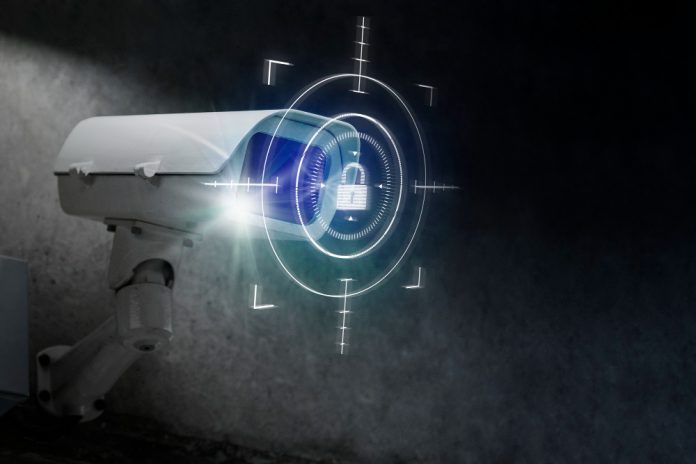Smart technology is reshaping how we live and how we protect where we live. For multifamily property managers and owners, multifamily building security cameras are no longer a luxury. They’re essential tools for protecting residents, securing shared spaces, and creating efficient building operations.
But not all security camera systems are created equal. Multifamily buildings face unique challenges that single-family homes and commercial offices don’t. From high resident turnover to frequent deliveries and a constant flow of visitors, these properties require camera systems designed with flexibility, visibility, and reliability in mind.
In this guide, we’ll break down what makes multifamily security cameras different, what features matter most, and how to choose the right system for your building today and for years to come.
What sets multifamily security cameras apart
Multifamily properties, from garden-style communities to high-rise apartment towers, face a wide range of security concerns. Unlike offices or retail spaces, these buildings function as homes for dozens or even hundreds of people, making 24/7 surveillance a critical part of maintaining peace of mind.
What makes multifamily security cameras different?
- High traffic volume: With residents, visitors, delivery drivers, service providers, and staff moving in and out all day, cameras need to capture continuous movement across multiple access points.
- Shared spaces: From package rooms to gyms and parking garages, there are many areas in a multifamily property that require coverage to prevent theft and resolve incidents.
- Resident privacy: While visibility is important, it must be balanced with privacy. That means placing cameras in public areas only and avoiding views into individual units.
- Access control integration: The most effective camera systems work in tandem with other building tech, particularly door entry systems, to streamline operations and ensure cohesive security.
Simply put, a one-size-fits-all approach doesn’t work for multifamily buildings. You need a system built with your property type in mind.
Key features to look for in building security cameras
As you evaluate your options, here are the top features to prioritize when choosing a security camera system for a multifamily building:
1. Remote access and cloud storage
Look for systems that allow you to view footage from anywhere and store recordings securely in the cloud. This not only eliminates the need for on-site servers but also ensures easy retrieval of past footage when investigating incidents.
2. High-definition video and night vision
Clear, detailed footage is a must, especially in low-light environments like parking garages or exterior entrances at night. Opt for cameras with HD resolution and reliable night vision capabilities.
3. Wide-angle and motion detection
Wide field-of-view lenses minimize blind spots, while motion detection triggers recordings at the right moment. Both features help reduce storage needs and ensure critical events are captured.
4. Mobile alerts and user-friendly apps
Today’s property managers can’t afford to be tied to a desk. Choose a system that sends mobile alerts when motion is detected or a door is opened, and allows footage review on the go.
5. Integration with building systems
The most powerful camera systems integrate with access control and intercom systems. This lets you see who’s entering your building and cross-reference video footage with access logs.
Where to install cameras in a multifamily building
A security camera is only as effective as its placement, which means strategic installation is essential to ensure comprehensive coverage and minimize blind spots. In multifamily buildings, cameras should be installed in high-traffic common areas where security risks are most likely to occur.
Start with building entrances, where cameras can monitor everyone entering and exiting the property. Lobbies and mailrooms are also key locations, as these areas see frequent activity and are common targets for package theft. Parking lots and garages should be covered to capture potential vehicle break-ins or vandalism. Elevators and hallways serve as critical transition spaces within the building, making them ideal for maintaining general oversight. Additionally, amenities like fitness centers, lounges, and rooftop areas benefit from surveillance to ensure the safety of residents and their guests.
As you plan your installation, make sure to comply with all local laws and privacy regulations. Avoid placing cameras inside private units or anywhere they might inadvertently capture personal, non-public activity.
How modern security cameras improve operations, not just safety
Security is the obvious benefit, but modern surveillance systems also support better building operations.
- Incident resolution: Recorded footage provides clear evidence in the case of theft, damage, or disputes.
- Resident satisfaction: Tenants are more likely to renew their leases when they feel safe and see proactive management.
- Delivery management: With cameras in package rooms and entryways, property staff can better track deliveries and reduce lost or stolen items.
- Operational efficiency: When your camera system integrates with access control, you reduce manual processes and streamline building oversight.
Wired vs. wireless systems: What’s right for your property?
One of the first decisions you’ll need to make when selecting a building security camera system is whether to choose a wired or wireless setup. Wired security cameras typically offer a more stable connection with higher video quality and less chance of signal interference. However, the installation process can be costly and time-consuming, particularly in existing buildings where routing cables through walls and ceilings may be disruptive.
On the other hand, wireless security cameras are generally easier to install and offer greater flexibility in terms of placement. They also tend to have a lower upfront cost, making them an attractive option for many property owners. The tradeoff is that wireless systems can be more susceptible to signal interference and are often reliant on a strong, consistent WiFi connection.
For new construction or properties undergoing significant renovations, a wired system may be worth the investment. But for retrofitting existing multifamily buildings, wireless systems are usually the more practical and cost-effective choice.
Choosing a scalable solution for long-term growth
Your building’s needs will evolve, and your security camera system should be able to grow with them.
Look for solutions that are:
- Cloud-based: These platforms offer remote updates, easier maintenance, and better scalability across multiple properties.
- Modular and expandable: Add new cameras or upgrade components as your property expands or your security requirements change.
- Vendor-supported: Choose a provider with proven customer support and a strong track record in multifamily security.
Avoid solutions that lock you into proprietary hardware or make future upgrades difficult. Your residents, staff, and bottom line will thank you.
Final thoughts: Building safer, smarter communities
In today’s real estate landscape, multifamily buildings aren’t just competing on amenities; they’re competing on security and technology. Building security cameras play a critical role in that equation, helping you create a safe, efficient, and future-ready property.
By selecting the right system with the right features and installing it in the right places, you’ll not only deter crime but also enhance your operations and deliver a better living experience for residents.
Whether you’re upgrading an older system or planning a new development, the key is to choose a camera platform that’s built with multifamily in mind. Because when your building runs smarter, everyone benefits.


